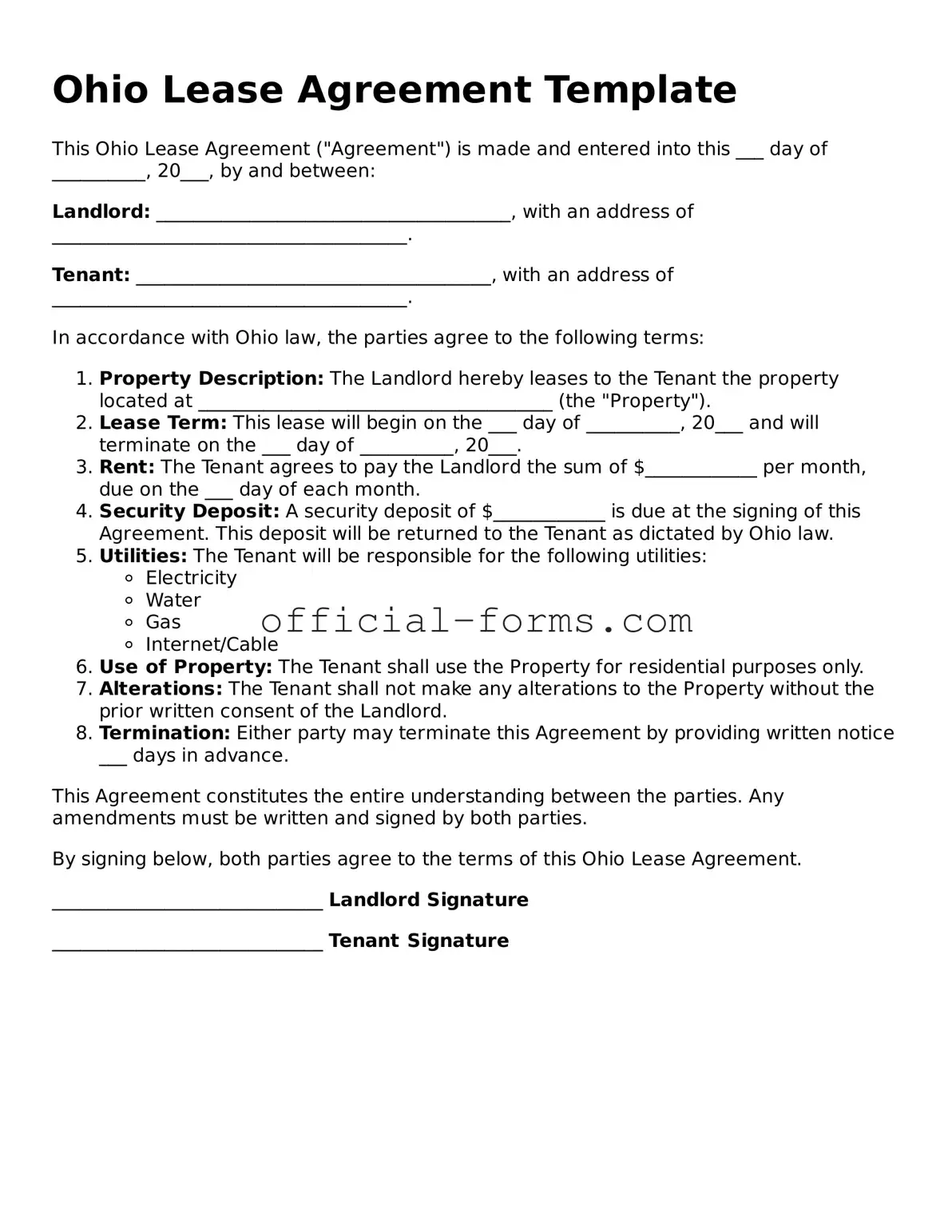Filling out the Ohio Lease Agreement form can be straightforward, but many people make common mistakes that can lead to confusion or disputes later on. Understanding these pitfalls can help ensure a smoother leasing experience for both landlords and tenants.
One frequent error is neglecting to provide accurate personal information. Tenants often forget to include their full legal names, current addresses, or contact numbers. This information is crucial for establishing a clear identity and ensuring that all parties can be reached if necessary.
Another common mistake involves failing to specify the lease term. Whether it’s a month-to-month agreement or a fixed-term lease, clarity about the duration is essential. Without this detail, misunderstandings about the end date can arise, leading to potential legal issues.
Many individuals also overlook the importance of detailing the rent payment terms. This includes specifying the amount due, the due date, and acceptable payment methods. If these terms are not clearly outlined, it can result in late payments or disputes over what was agreed upon.
Moreover, not addressing maintenance responsibilities can create problems down the line. It’s vital to clarify who is responsible for repairs and maintenance, as well as how requests should be communicated. This helps prevent frustration and ensures that both parties understand their obligations.
Another mistake is leaving out important clauses that protect both parties. For instance, including provisions for termination, security deposits, and pet policies can save time and trouble later. Without these clauses, tenants and landlords may find themselves in uncomfortable situations without clear guidelines.
Lastly, failing to review the lease agreement before signing can lead to significant issues. It’s essential for both landlords and tenants to read through the document carefully. This ensures that all terms are understood and agreed upon, reducing the likelihood of disputes in the future.
By being aware of these common mistakes, individuals can fill out the Ohio Lease Agreement form more effectively. A well-completed lease fosters a positive relationship between landlords and tenants, paving the way for a successful rental experience.
